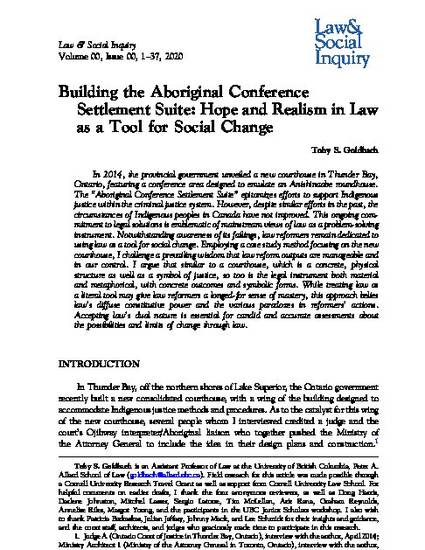
- Aboriginal Settlement,
- Law,
- Social Change
In 2014, the provincial government unveiled a new courthouse in Thunder Bay, Ontario, featuring a conference area designed to emulate an Anishinaabe roundhouse. The “Aboriginal Conference Settlement Suite” epitomizes efforts to support Indigenous justice within the criminal justice system. However, despite similar efforts in the past, the circumstances of Indigenous peoples in Canada have not improved. This ongoing commitment to legal solutions is emblematic of mainstream views of law as a problem-solving instrument. Notwithstanding awareness of its failings, law reformers remain dedicated to using law as a tool for social change. Employing a case study method focusing on the new courthouse, I challenge a prevailing wisdom that law reform outputs are manageable and in our control. I argue that similar to a courthouse, which is a concrete, physical structure as well as a symbol of justice, so too is the legal instrument both material and metaphorical, with concrete outcomes and symbolic forms. While treating law as a literal tool may give law reformers a longed-for sense of mastery, this approach belies law’s diffuse constitutive power and the various paradoxes in reformers’ actions. Accepting law’s dual nature is essential for candid and accurate assessments about the possibilities and limits of change through law.
